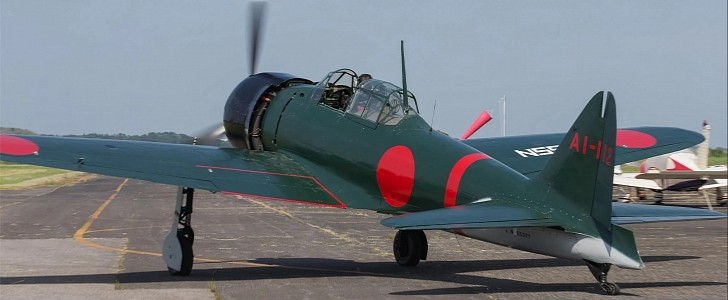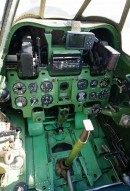It'd be a little bit of hyperbole to say the Grumman F6F Hellcat single-handedly gave the U.S. military air superiority over the Pacific Theater of World War II. The Vought F4U Corsair played a huge role as well, of course. But it can't be denied when the Hellcat arrived, the Mitsubishi A6M Zero's goose was cooked.
The Hellcat's shoot-down-to-loss ratio was a staggering 19:1, accounting for three-quarters of the U.S. Navy and Marine Corps air-to-air shootdowns against Imperial Japan. Of the 10,000 Mitsubishi A6Ms manufactured between 1939 and 1945, between 25 and 40 numbers-matching airframes are known to survive in museums. Only two are still airworthy, and only one of them still sports its original Nakajima Saka 14-cylinder radial engine.
But that doesn't mean a handful of airworthy A6M Zeroes aren't out there that aren't numbers matching. As is popular with the majority of airworthy Imperial Japanese airplanes, this A6M3 model listed for sale recently was salvaged from the brink of destruction and brought back to life with the parts from other Japanese planes. Admittedly, that does make identifying their serial numbers difficult. But just look at the results!
This particular Zero was recovered from a disused Japanese airbase called Babo Airfield in what's now modern-day Indonesia. As this area was largely glossed over once their strategic bombing campaigns stopped and the occupation of the Japanese home islands began, this airframe and so many others were allowed to rest quietly. That was until a Californian collector named Bruce Fenstermaker discovered the wreck sometime between the late 70s and mid-1980s.
This wreck, along with two others, was shipped back to California and painstakingly restored over the course of nearly two decades. With help from a Russian firm notable for producing Yakovlev Yak-3s replicas powered by American engines, this plane was fitted with a Pratt & Whitney R-1830-75 similar to the one found in the Grumman F4F Wildcat, the Hellcat's "younger brother." But the aircraft that you see here is flyworthy and has just 200 SMOH. Moreover, it was used in the 2001 Pearl Harbor motion picture.
But that doesn't mean a handful of airworthy A6M Zeroes aren't out there that aren't numbers matching. As is popular with the majority of airworthy Imperial Japanese airplanes, this A6M3 model listed for sale recently was salvaged from the brink of destruction and brought back to life with the parts from other Japanese planes. Admittedly, that does make identifying their serial numbers difficult. But just look at the results!
This particular Zero was recovered from a disused Japanese airbase called Babo Airfield in what's now modern-day Indonesia. As this area was largely glossed over once their strategic bombing campaigns stopped and the occupation of the Japanese home islands began, this airframe and so many others were allowed to rest quietly. That was until a Californian collector named Bruce Fenstermaker discovered the wreck sometime between the late 70s and mid-1980s.
This wreck, along with two others, was shipped back to California and painstakingly restored over the course of nearly two decades. With help from a Russian firm notable for producing Yakovlev Yak-3s replicas powered by American engines, this plane was fitted with a Pratt & Whitney R-1830-75 similar to the one found in the Grumman F4F Wildcat, the Hellcat's "younger brother." But the aircraft that you see here is flyworthy and has just 200 SMOH. Moreover, it was used in the 2001 Pearl Harbor motion picture.
















